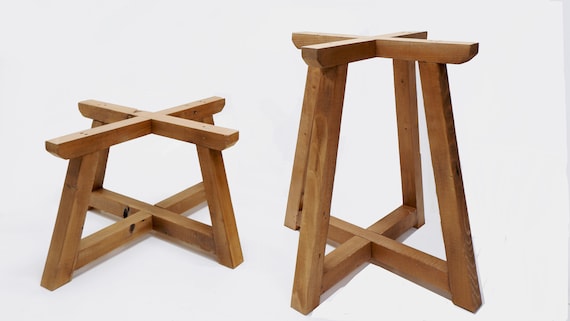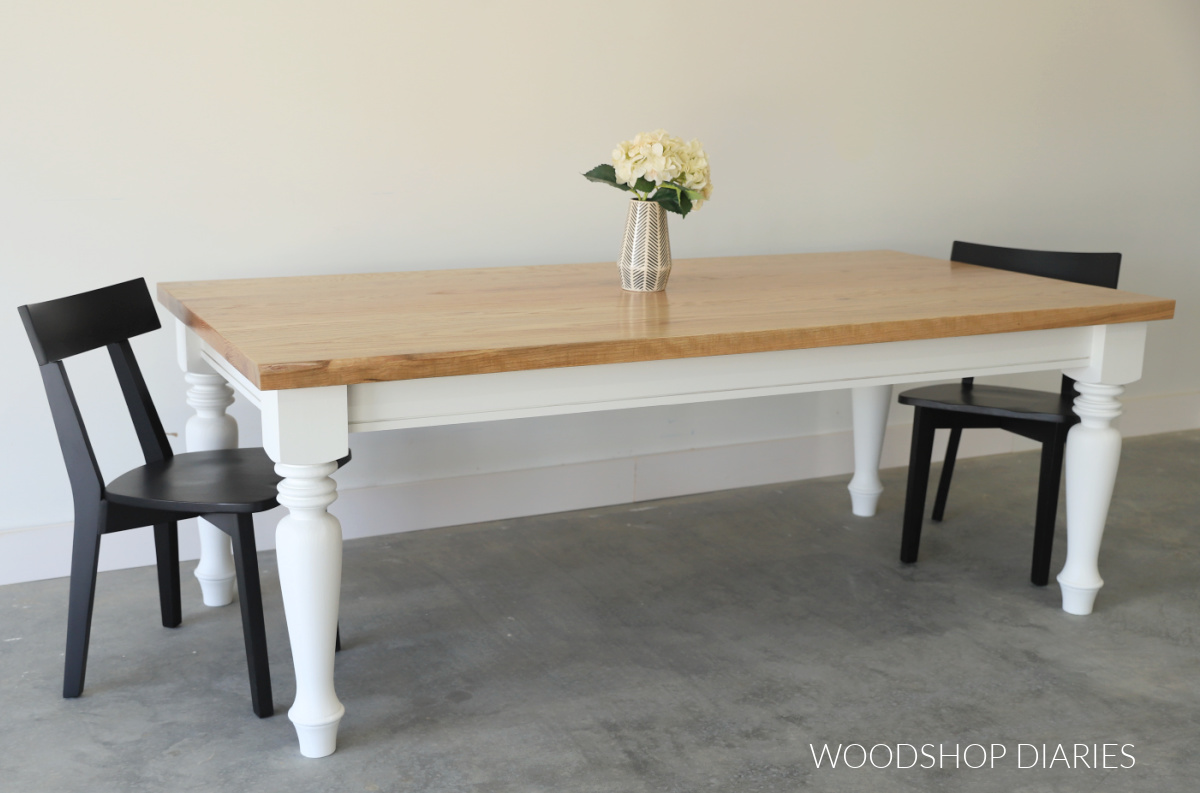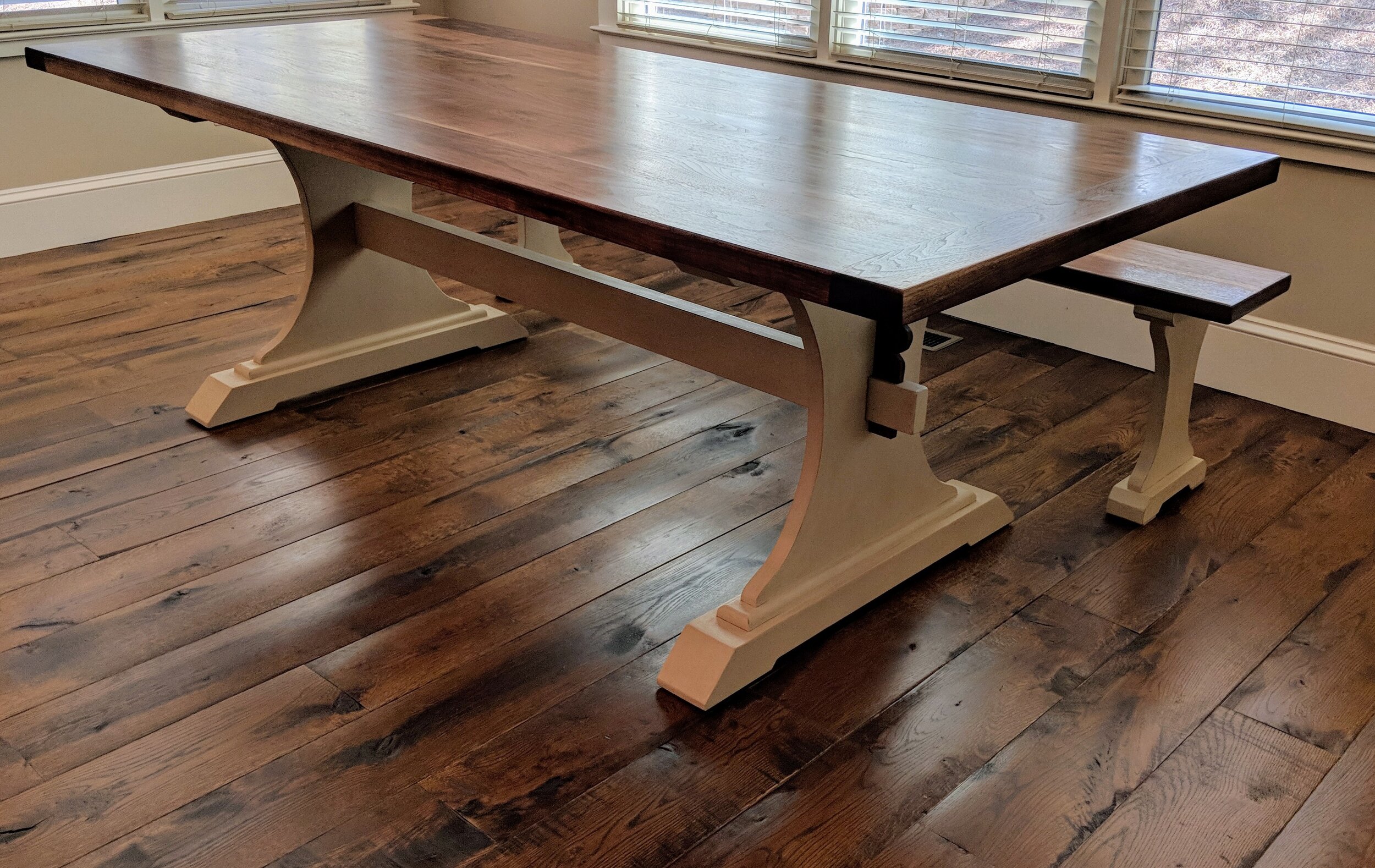Upgrade Your Table's Appearance with Attractive Dining Table Legs Wood Designs
Upgrade Your Table's Appearance with Attractive Dining Table Legs Wood Designs
Blog Article
Checking Out the Different Kinds Of Table Legs Wood for Your Eating Space
The selection of table legs wood can profoundly impact both the visual and practical high qualities of your eating area. Solid wood options, such as oak and walnut, supply a traditional appearance with unequaled toughness, while engineered timber alternatives supply ingenious layouts that imitate the splendor of natural grains. In addition, the growing pattern of reclaimed timber presents a sustainable component that appeals to ecologically aware consumers. As we discover these various alternatives, it becomes crucial to consider not just the aesthetic appeal yet also the useful effects of each material option. What variables should assist your choice?
Strong Wood Options

Unlike engineered products, strong wood is less susceptible to warping and damage over time when properly preserved. Each item of solid timber is one-of-a-kind, showcasing individual attributes that include to the beauty and character of the dining table.
Furthermore, solid wood can be finished in various methods, varying from all-natural oils to discolored finishes, enabling property owners to individualize their furniture to match their style. In recap, choosing solid wood for dining table legs not only guarantees structural stability however also enhances the aesthetic appeal of the dining area, making it a worthwhile financial investment for any kind of home.
Engineered Wood Alternatives

Plywood, constructed from multiple layers of wood veneer, is stable and specifically strong, making it an outstanding selection for eating table legs. Its layered make-up permits it to withstand adjustments in humidity and temperature better than traditional strong timber. MDF, on the various other hand, supplies a smooth surface area for painting or veneering, allowing developers to attain a polished look while maintaining architectural stability.
Particleboard, typically used in budget-friendly options, offers suitable stamina and is lightweight, making it simpler to take care of. It may not be as long lasting as plywood or MDF. It is essential to think about the intended usage and desired aesthetic when selecting engineered wood choices. These products not only enhance the performance of eating spaces yet also permit for better design adaptability, making certain that typical and contemporary designs can exist together harmoniously.
Reclaimed Wood Includes
Reclaimed timber uses an one-of-a-kind mix navigate to this website of sustainability and personality, making it an increasingly popular option for dining table legs. Sourced from old barns, manufacturing facilities, and various other structures, reclaimed wood symbolizes a background that brand-new materials just can not reproduce. Each item lugs its very own story, noted by distinct imperfections, knots, and varying grain patterns, which contribute to a table's special aesthetic allure.
Along with its aesthetic appeal, recovered timber is an ecologically friendly alternative. By repurposing formerly used products, it decreases the need for brand-new lumber, therefore helping to preserve forests and reduce waste. This aligns with a growing consumer choice for lasting practices in home furnishings.
Moreover, recovered timber is often much more durable than newly collected wood due to its age. The natural drying process that redeemed wood undertakes cause a denser and stronger material, making it less susceptible to bending and splitting. This boosts the long life of eating tables, allowing them to stand up to the roughness of everyday use.
Softwood vs. Wood
When picking eating table legs, comprehending the differences between softwood and hardwood is vital for accomplishing both useful and aesthetic objectives. They normally exhibit a more rustic appearance, making them suitable for country-style or laid-back dining rooms.
On the various other hand, hardwoods, sourced from deciduous trees like oak, cherry, and maple, are renowned for their density, strength, and longevity. The elaborate grain patterns and abundant colors of woods give a advanced and ageless allure, making them suitable for formal eating setups. While woods tend to be extra costly and heavier, their durability against damage usually justifies the investment.
Eventually, the choice between softwood and wood for dining table legs must line up with your design vision, usage demands, and budget, making sure that your eating space mirrors your individual design while continuing to be useful over time.

Finishes and Treatments
The visual charm and long life of eating table legs can be dramatically boosted via different surfaces and treatments. These procedures not only safeguard the wood from damage however also elevate its appearance, enabling it to enhance varied indoor styles.
One common treatment is tarnishing, which penetrates the timber and boosts its all-natural grain while including shade. Discolorations offer an abundant, classy look, web allowing homeowners to match their furnishings with existing decor. Alternatively, clear surfaces such as polyurethane or varnish produce a safety layer without modifying the wood's original tone, making sure resilience against wear and tear.
In addition, all-natural oils, like tung or linseed oil, nurture the wood and offer a subtle luster, all while being environment-friendly. These oils enable the surface to breathe, protecting against wetness build-up and prospective warping.
For those seeking a rustic charm, troubled or weathered coatings can be put on develop an aged look, including character to the item. Ultimately, the option of finishes and therapies depends on personal choice, desired visual appeals, and her latest blog the details timber kind, making it important to consider these variables when selecting eating table legs for your space.
Verdict
To conclude, the choice of dining table leg materials substantially influences both the aesthetic and functional aspects of an eating room. Strong timbers, engineered choices, and redeemed options each deal unique benefits, accommodating different preferences and needs. Understanding the differences between woods and softwoods, along with ideal surfaces and therapies, enables for notified decision-making. Eventually, the option of timber type need to straighten with desired design, toughness, and ecological factors to consider, enhancing the total eating experience.
The selection of eating table legs wood can profoundly impact both the aesthetic and useful top qualities of your dining space - Dining Table Legs Wood. Strong timber choices, such as oak and walnut, offer a classic appearance with unequaled resilience, while engineered timber options offer innovative styles that mimic the richness of all-natural grains. Strong timber offers a timeless high quality that can raise the overall design of an eating area. Each piece of strong wood is unique, showcasing specific attributes that add to the charm and personality of the dining table
In addition, redeemed wood is often extra long lasting than newly collected wood due to its age.
Report this page